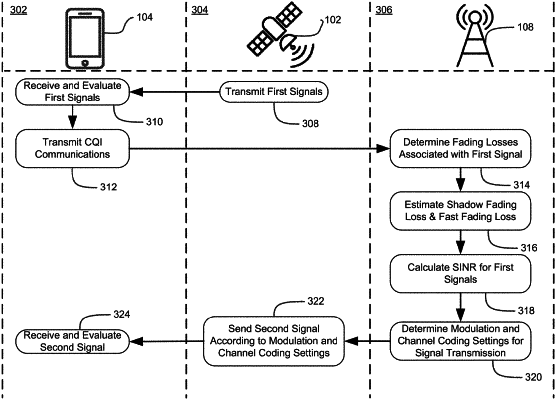| CPC H04B 17/336 (2015.01) [H04B 17/318 (2015.01); H04B 17/404 (2015.01)] | 16 Claims |

|
1. A method, comprising:
causing, by a base station, a first signal to be transmitted from a non-terrestrial station to user equipment during a first transmission time period;
receiving, by the base station, a communication indicating signal quality for a plurality of times during the first transmission time period;
obtaining, for the plurality of times, a plurality of fading losses associated with the first signal;
estimating, for a future time subsequent to the plurality of times, a first fading loss of a first loss type associated with the first signal by at least applying a first filter to the plurality of fading losses;
estimating, for the future time, a second fading loss of a second loss type associated with the signal by at least determining differences between the plurality of fading losses and the first fading loss;
calculating signal-to-interference-plus-noise-ratio (SINR) that includes at least one fading loss selected from the first fading loss and the second fading loss;
causing the non-terrestrial station to transmit a second signal for a second transmission time period that includes the future time, the second signal having first settings for modulation and channel coding parameters, the first settings determined based on the SINR calculated;
receiving communications indicating successful receipt of a defined number of second signal transmissions during the second transmission period; and
causing, as a result of receiving the communications indicating successful receipt of the defined number of second signal transmissions, the non-terrestrial station to transmit a third signal to the user equipment according to third modulation and channel coding parameters for a third transmission period.
|